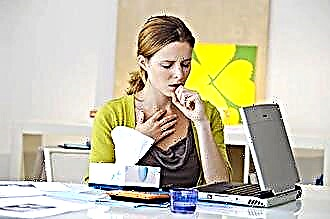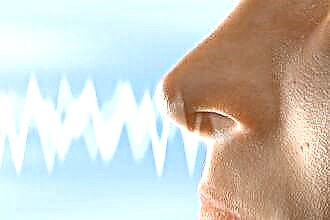Feeling of a lump in the throat with VSD
First of all, it is necessary to understand the etiology of this symptom. As you know, the main triggering mechanisms of attacks of vegetative-vascular dystonia are stresses, most often psychoemotional; as well as overwork. A similar condition is accompanied by panic attacks, difficulty breathing, burning pain in the heart, increased sweating and other symptoms.
Very often they are joined by pain, squeezing, a feeling of a foreign body in the throat. With VSD, there is a violation of the innervation of many structures, including the muscles and mucous membranes of the larynx and pharynx. This leads to a spasm of these organs, or to irritation of their surface. That is why this state arises.
The following symptoms are also characteristic:
- painful, difficult swallowing;
- hoarseness of voice;
- lack of satiety when eating;
- unpleasant taste in the mouth.
More often, this condition manifests itself during the day. Patients often try to relieve the unpleasant sensation by drinking water. This can only bring temporary relief, but in no way affects the cause.
At the same time, patients often begin to perceive this as a sign of a more serious disease - the presence of an oncological neoplasm or goiter of the thyroid gland. All this provokes even more stress, which only aggravates the general condition of the patient.
Burning and sore throat with dystonia
A perspiration and burning sensation in the throat with VSD has the same etiology as the appearance of a coma. These are different shades of the same symptom. Nevertheless, these particular sensations may be accompanied by several other signs that complicate their diagnosis. They are most often confused with colds or stomach ailments.
So, low-grade fever and sore throat, which are characteristic of VSD, are provoked by irritation of the mucous membrane, while a dry cough (without sputum) suggests pharyngitis or laryngitis. When the stomach or esophagus is affected, a burning sensation, some difficulty in swallowing, belching, and nausea are possible. The same symptoms occur with dystonia. At the same time, patients do not go to the hospital, but self-medicate, which, of course, does not bring relief. If they asked for help, a short-sighted doctor may not see the signs of VSD and prescribe medications that are useless in such a case in a circle.
What to do if you have a coma in your throat?
The appearance of such a symptom as a lump in the throat is not always the case with VSD. This can be a sign of completely different diseases.
The algorithm of actions in this case is very simple. When such symptoms appear, you should consult a doctor, first of all, a therapist. He will either make the diagnosis himself or refer you to other specialists for additional examinations.
In the future, you will need to pass some diagnostic tests to exclude organic pathology:
- general and biochemical blood test;
- Ultrasound of the thyroid gland;
- fibrogastroduodenoscopy;
- MRI or CT scan of the neck area;
- consultations of an endocrinologist, otolaryngologist, neuropathologist, gastroenterologist.
A lump in the throat with VSD is a diagnosis of exclusion. This means that it is necessary first of all to discard other possible causes of this symptom, and only then to confirm vegetative vascular dystonia.
To treat VSD and discomfort in the throat is a rather long and difficult task. Moreover, most of the success depends on the efforts of the patient, since this is a disease, the source of which is in the patient's mind.
The goal of drug treatment is to reduce anxiety, correct autonomic disorders, and relieve spasms. For this, the following drugs are used:
- antidepressants;
- tranquilizers;
- sedatives;
- beta-blockers.
Psychotherapy allows you to get rid of panic thoughts, teaches you to control stress and negative emotions that provoke attacks of dystonia.
Physical exercises, including breathing exercises, can strengthen the general condition of the body, tone up the cardiovascular and pulmonary systems, and stimulate the immune system.
Herbal medicine is considered a safe and effective method that allows you to fight all manifestations of VSD.
Physiotherapy procedures (electrophoresis, magnetotherapy) also have a beneficial effect on the nervous system, thereby reducing the severity and frequency of vegetative crises.
Conclusions
The feeling of a lump with vegetative dystonia is considered a very common symptom that significantly reduces the patient's quality of life. First of all, this is due to a violation of swallowing, which interferes with a normal diet.
It should be remembered that this condition is not a separate syndrome, but only one of the many manifestations of VSD. Therefore, treatment requires an integrated approach, which consists of pharmaco and psychotherapy, exercise therapy and the use of folk remedies.



